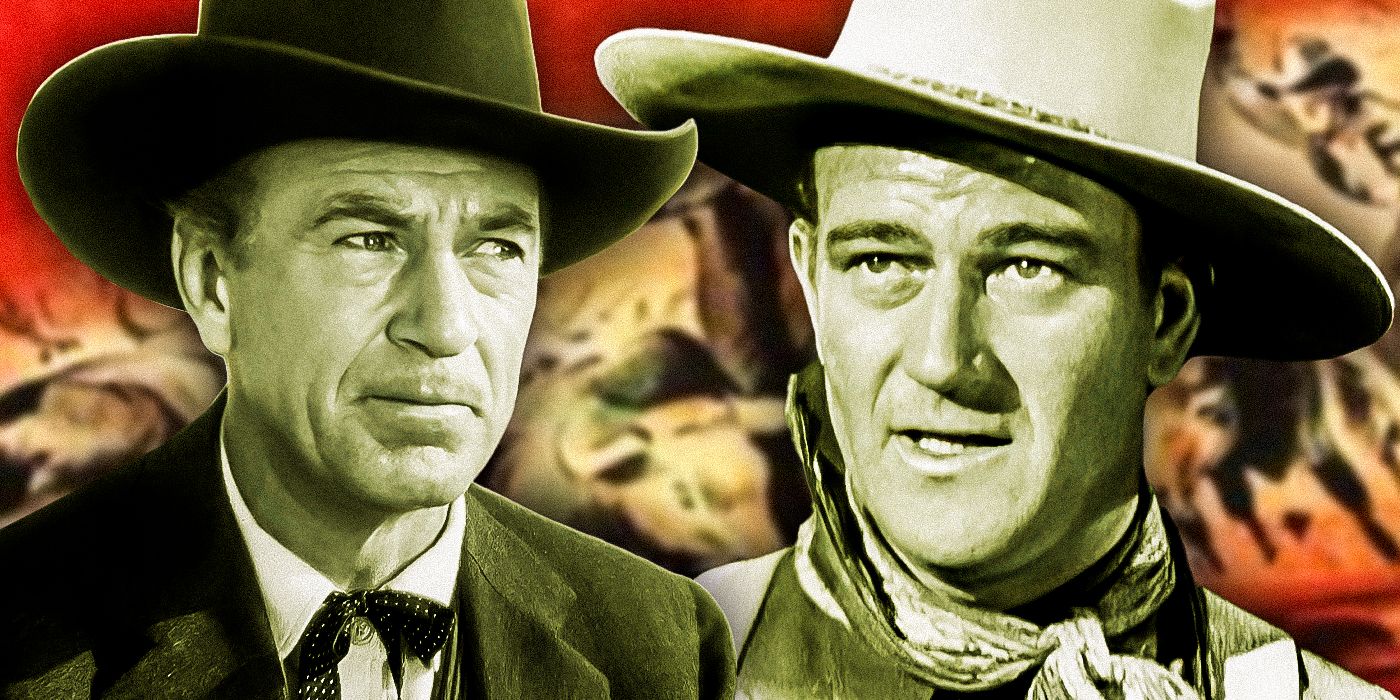Summary
- Black-and-white Westerns showcase timeless stories, iconic stars, and beautiful imagery with historical and cultural significance.
- Directors like John Ford crafted classics like 'My Darling Clementine' that delved into Old West legends with depth and respect.
- Unique films like 'Dead Man' in 1995 continued the black-and-white tradition, offering new perspectives on Western themes.
The Western genre of filmmaking was full of so many incredible black-and-white movies that showcased the enthralling stories of cowboys, gunslingers, and outlaws. While many Western movies have utilized the power of color to showcase beautiful depictions of scenic landscapes as a highly picturesque view of America was presented onscreen, plenty more have traded color for the effective impact of black-and-white filmmaking. While this was a necessity in the early days of Hollywood, as color took over as the primary style of moviemaking, black-and-white films became a more intentional stylistic choice.
The best black-and-white Westerns were made by acclaimed directors like John Ford and featured iconic Western stars such as John Wayne, Henry Fonda, and Glenn Ford. While most of the greatest black-and-white Westerns were released during the genre's heyday from the 1930s to the 1950s, there were also some standout colorless releases in more recent times. Although black-and-white movies may look outdated to some, these films have all stood the test of time and ranked among the best Westerns ever produced.
10 3:10 To Yuma (1957)
Directed by Delmer Daves
3:10 to Yuma (1957)
- Director
- Delmer Daves
- Release Date
- August 7, 1957
- Cast
- Glenn Ford , Van Heflin , Felicia Farr , Leora Dana , Henry Jones
- Runtime
- 92 Minutes
A small-time rancher was hired to take out a big-shot outlaw in the black-and-white Western classic 3:10 Yuma. With Glenn Ford as the struggling everyman Dan Evans and Van Heflin as the notorious stagecoach-robbing gunslinger Ben Wade, 3:10 to Yuma was an intense Western shootout with beautiful cinematography. As Evans sought vengeance against the criminal who killed his two sons, the most striking thing about 3:10 to Yuma was how well it utilized its black-and-white imagery to create some truly spectacular mise-en-scène.
While 3:10 to Yuma was famously remade by director James Mangold with Russell Crowe and Christian Bale, that adaptation lacked the sharp black-and-white cinematography of the original version and paled in comparison. With an engrossing story, compelling characters, and a truly impressive aesthetic, 3:10 to Yuma deserved to be ranked among the best Westerns of the 1950s. The film was also memorable for its theme song, “The 3:10 to Yuma," which highlighted the movie’s themes of cowboys, outlaws, and the greater good in the Old West.
9 Fort Apache (1948)
Directed by John Ford
Fort Apache (1948)
- Director
- John Ford
- Release Date
- March 27, 1948
- Cast
- John Wayne , Henry Fonda , Shirley Temple , John Agar , Ward Bond , Irene Rich , Anna Lee , George O'Brien
- Runtime
- 125 Minutes
As just one of many collaborations between director John Ford and screen legend John Wayne, Fort Apache was a fantastic black-and-white Western that acted as one of the first in its genre to present a sympathetic view of Native Americans. Having previously been portrayed as one-dimensional savage villains, Fort Apache gave credence to indigenous cultures and presented them with previously unseen respect. Wayne was joined by a star-studded cast in Fort Apache that also included Henry Fonda and Shirley Temple in one of her final film roles.
With a story inspired by real-life Wild West conflicts like the Battle of Little Bigfoot and the Fetterman Fight, Fort Apache told a complex story about an honorable veteran in conflict with a prejudiced lieutenant colonel who held no respect for local tribes. The first in Ford’s ‘Cavalry Trilogy’, Fort Apache was followed by She Wore a Yellow Ribbon and Rio Grande. Fort Apache was a clever and nuanced Western that revealed hidden depth with every subsequent viewing.


